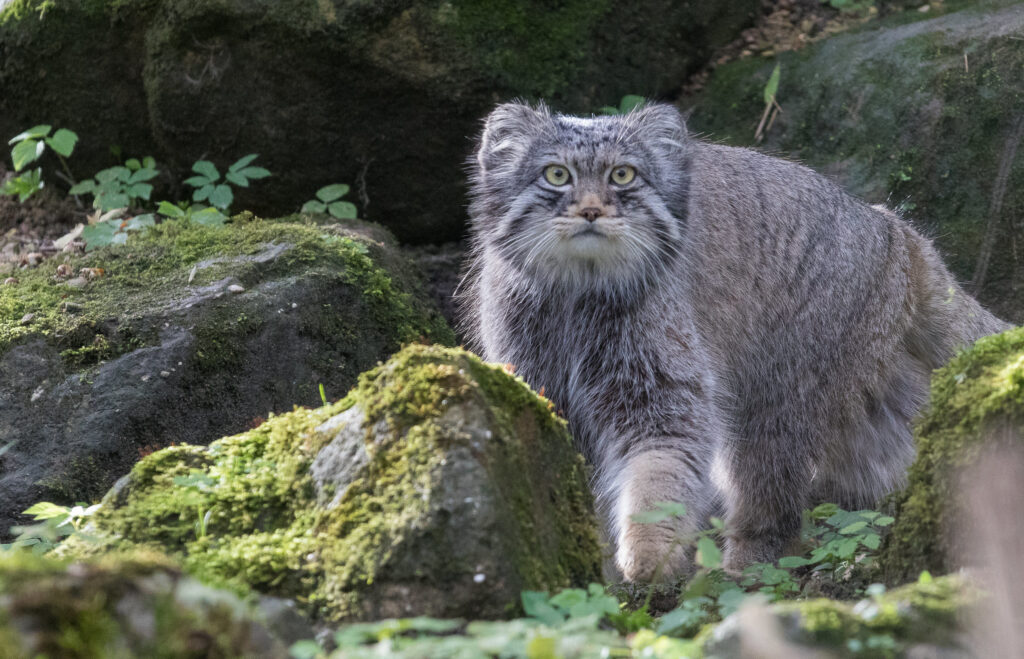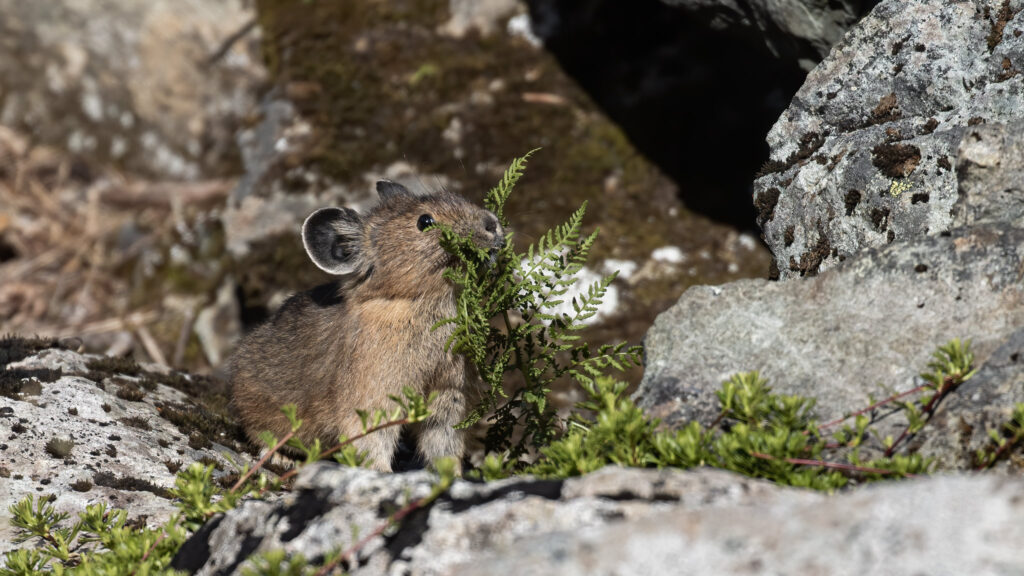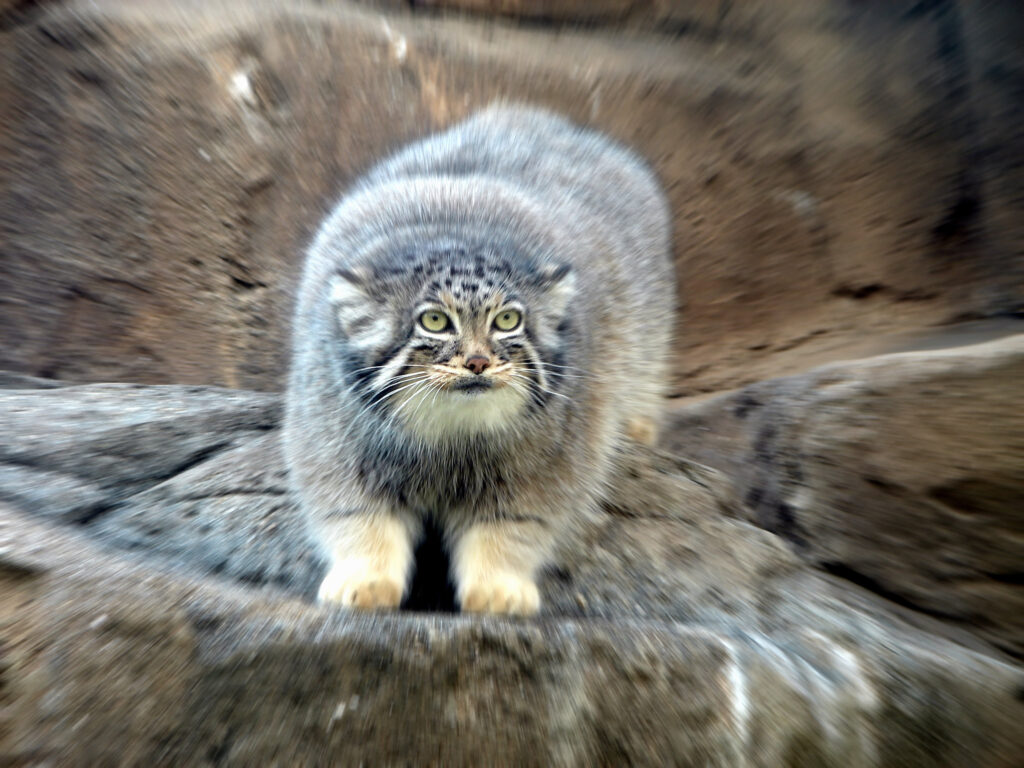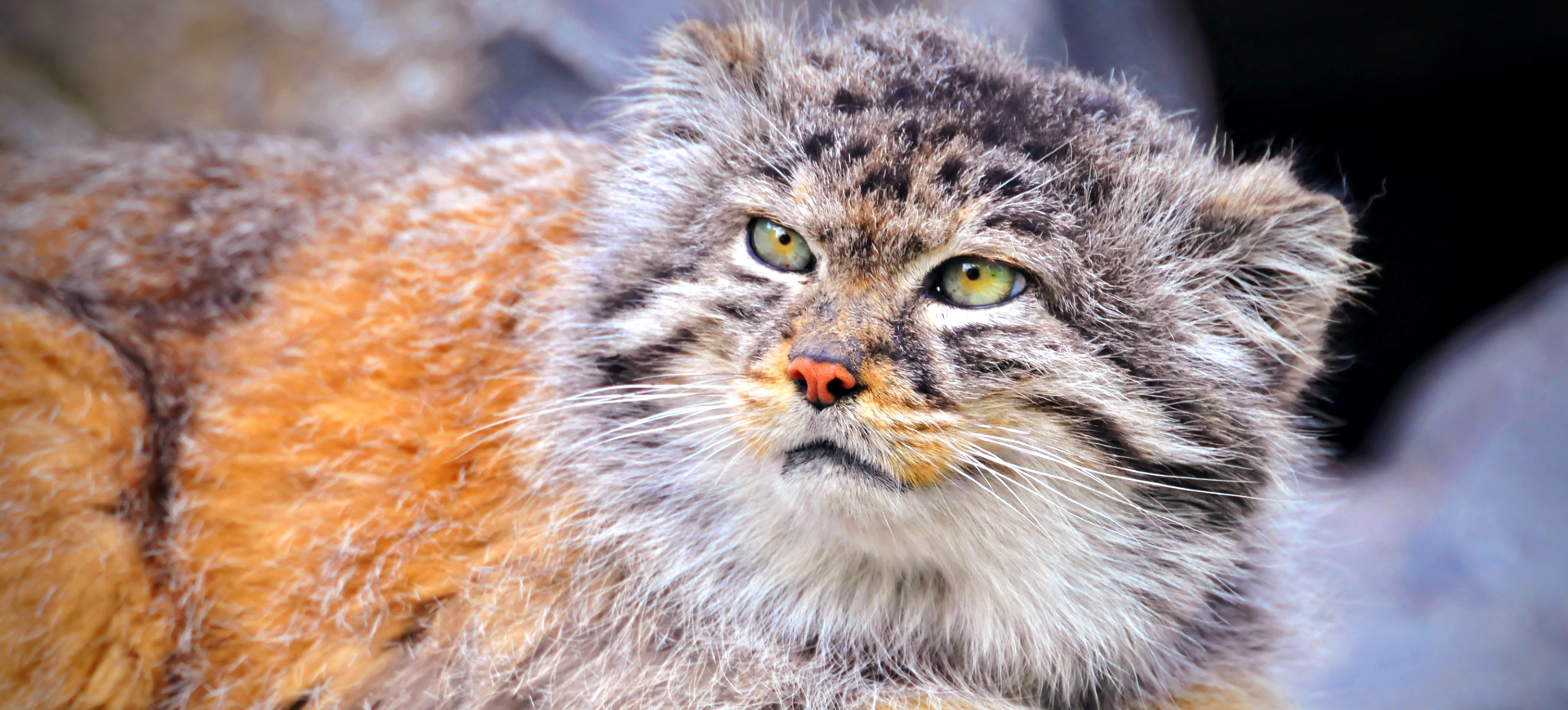Found in Central Asia’s grasslands and Montane Steppes, Pallas’s cat is known for its distinctively long, dense fur, stocky posture, and expressive facial features.
This small, chubby wildcat was the star of YouTube at one point, but we’d still wager you don’t know much about it apart from its adorable, albeit grumpy-looking, face.
This guide is your perfect opportunity to find out, as we discuss some lesser-known facts about this marvelous feline that are sure to pique your interest.
Pallas’s Cat Key Highlights
- Pallas’s cats, named after their discoverer Peter Pallas, are known for their thick, dense fur, chunky builds, and all-around aggressive behavior towards other animals and their own kind.
- The Pallas cat’s fame stems from its unusual physical characteristics including its circular pupils, short, round ears, and incredibly dense tails.
General Info About Pallas’s Cat
| Habitat: | Grasslands and Mountainous Steppes |
| Location: | Central Asia |
| Lifespan: | Wild: 2 years, Captivity: 11 years |
| Weight: | 5.5 – 11 lbs |
| Diet: | Pikas, Voles, small birds and insects |
| Predators: | Foxes, wild dogs, and birds of prey. |
| Size: | 18 – 26 inches |
| Top Speed: | 30 mph (48 km/h) |
Learn more by reading our ultimate profile of the Pallas’s Cat!
Top 12 Facts About Pallas’s Cat
1) They’re Smaller Than You May Think
If you ever get the pleasure of seeing a Pallas’s cat up close, you’d realize that they’re not as big as they seem. In reality, their size is exaggerated by their dense, long coat and chunky build.
In terms of specific measurements, a Pallas cat is roughly 18 – 26 inches in body length (about the size of your average house cat) and only weighs about 10 pounds.

2) Their Name Translates to “Ugly-Eared”
At the time of its discovery, the Pallas cat was given the scientific moniker of Felis Manul. Later on, however, that moniker was changed to Otocolobus Manul.
A Greek name, which roughly translates to “Ugly-Eared”. While that is a seemingly “ugly” moniker, you can understand why it was given that name seeing as its ears are a bit unusual.
3) They Have Unusual Pupils
Speaking of the creature’s appearance, did you know that the Pallas cat’s eyes are quite different from a normal house cat’s?
Instead of contracting to form little vertical slits, their eyes actually form into small pupils, much like our own eyes and that of larger predators like Lions.
4) The Pallas’s Cat’s Ears are Perfect for Hunting
Let’s finally discuss the elephant in the room: The Pallas Cat’s ears, the reason for their “Ugly-Eared” moniker. These feline mammals have round ears, instead of pointy ones, that sit squarely flat on the side of their heads.
As you’ve probably realized, this unusual physical feature helps the cat stay hidden from its prey until it’s time to pounce. Additionally, it also keeps them hidden from any predators hunting them.
5) Their Favorite Prey is Pika

You shouldn’t be surprised to know that Pallas Cats are expert hunters. In fact, they’re what’s known as ambush hunters. Meaning they lie in wait for their prey at the entrance of their burrows or stalk them through short vegetation.
What you might not have known is that their favorite prey is the small mammal Pika and that it makes up for 50% of the cat’s diet.
6) Pallas’s Cats are Known for Their Extremely Dense and Long Fur
Pallas cats are known to have the densest and thickest fur of any cat in the world. According to scientists, this helps the mammal stay warm in its cold and arid habitat. Their coat is particularly thick around the belly and tail area.
In fact, their coat actually grows noticeably thicker and longer in the winter months when they have to hunt on solid, frozen ground.
7) Pallas’s Cats are Far From Social Animals
Most of us think of cats as house pets that love to socialize with us. Pallas’s cats couldn’t be more different than that. Like all cats, these creatures love to mark their own territory with their scent.
However, unlike other cats, they prefer hiding inside crevices, caves, and burrows made by other animals until it’s time to hunt.
8) They Don’t Enjoy Each Other’s Company
Their unsocial nature doesn’t just extend to other animals but to their own kind as well. Despite being labeled as adorable, fluffy creatures, Pallas cats are actually quite aggressive to each other.
According to the director of animal research at Cincinnati Zoo, these creatures come out of the womb hissing and growling at each other in anger.
9) Pallas’s Cats are Very Particular About their Habitats

As you might’ve already guessed, Pallas’s cats prefer to live in cold and arid environments surrounded by grasslands and rocky steppes.
The majority of the wild cat’s population can be found in Central Asia, specifically in areas ranging from India and Pakistan all the way to northern China. They also prefer migrating upwards, settling in elevations up to 15,000 feet.
10) Their Nearest Relative is the Leopard Cat
At the time of its discovery, many including Peter Pallas thought that the wild cat may be related to Persian cats.
However, as time progressed experts found evidence suggesting that the Pallas cat’s closest relative may be the leopard cat.
11) They Have a Particularly Short Mating Season
Pallas cats only mate during the time between December and March. They’re also known to carry their young for approximately 66 to 75 days.
Which means they end up giving birth somewhere between the end of March and the beginning of May. Their litters can contain up to 8 kittens.
12) They Can’t Run for Long Distances
Due to their small and light body, Pallas’s cats aren’t known for their running ability. When forced to run from predators, a Pallas Cat’s primary evasive tactic is to climb up on boulders or hide in small crevices.
Learn more by reading our ultimate profile of the Pallas’s Cat!

